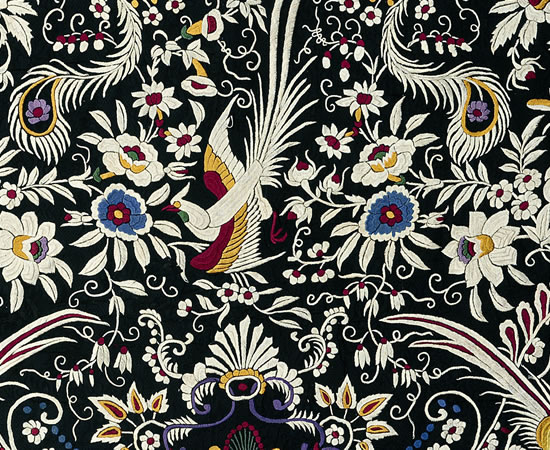Parsi Embroidery: A Fading Art Parsi embroidery is yet another example of how a century-old art can be so relevant, without putting up with those bleeding colors. Parsi embroidery is a unique part of India's diverse textile heritage. This unique artistic tradition has its roots in Iran during the Bronze Age but with time it has drawn influences from European, Chinese, Persian and Indian culture.  | | Parsi Embroidery | A very famous example of Parsi embroidery is the Parsi embroidery sarees also called as Gara embroidery sarees. Parsi embroidery sarees have been renowned since last bygone centuries for its striking beauty and also demonstrates a cultural Parsi tradition of embroidery and ethos. These saris come in many colors, are offset by delicate embroidery in pastel shades and pale white, and are testimony to the superior craftsmanship of the Parsi embroiders. Realistically pictorial, lyrically composed, aesthetically colorful and delicately embellished Parsi Gara embroidery is an emblem of style and elegance.  | | Parsi Gara Saree |  | | Classisc Parsi Embroidery in Saree | These sarees are indeed worth a treasure and take almost 9 months for completion as the embroidery work is crafted on all the four sides of the saree making it one of the most tedious and intricate task. The khaka stitch is so fine that women who do the needlework start suffering from failing eyesight, which has given it the name of the forbidden stitch. Mostly the threads used for embroidery are violet and pink combination. Parsi sarees are comparatively more costlier but their appeal and style are so immensely enchanting that it overcomes all the hurdle of price tag for a avid buyer.  | | Parsi Saree in White Color | The rich gara embroidery, originally considered a Parsi family's heirloom, has become rare, collector's items because of the intricate work and beauty. Since it's not a machine embroidery one of the most prized possessions of Parsi families (read women) is their Gara saree or sarees! Not only are they possessions of pride and boy, these beautifully embroidered sarees are often worth more the rest of the entire family wardrobe put together!  | | A Prized Possesion for Parsi Family | Parsi embroidery incorporates motifs that have deep meanings. The reverence of the Parsees towards nature is evident in their embroidery work. The fleeing Parsis brought Persian symbols like the cypress tree, chakla chakli or contradictory birds, represented with delicacy. A tree called the divine fungus is used as a symbol of longevity and immortality. Lotus and peacock brings the fragrance of the Indian soil in which Parsi culture blossomed. Raj flavour incorporated floral baskets, the Chinese pheria stitched in vignettes of Chinese court life, beautiful gardens and flowers such as peony, rose, and chrysanthemum. Some or all these motifs fill up a typical gara or jhablawith an overriding feel of harmony, richness, grandeur and delicacy.  | | Parsi Embroidery Work |  | | Parsi Gara Embroidery | History:Although Parsi embroidery traces its origins to Bronze Age Persia, the garaitself is not more than 150 years old. Its concepts and symbolism, which lay in the Zoroastrian psyche coupled with an innate sense of aesthetics, were translated into embroidery on sari and apparel by Chinese master embroiderers. In the 19th and early 20th centuries there was brisk trade between Parsis of Western India and China. Back then, Chinese pherias, or craftsmen, travelled with big chests of embroidery across the seas to Persian lands and sold them to Parsi women. Some of the Parsi women were also taught the craft by these pherias, and the women later skilfully interwove the new style with their own.  | | Salwar Suit with Parsi Embroidery | However, this unique and magnificent art is facing dangers of fading into oblivion. With mass produced clothes readily available nowadays, the interest in traditional hand embroidered clothing has steadily dwindled over the decades and is a constant threat to the livelihood of many craftsmen. Moreover, the decline in the Parsi community is another cause of worry.  | | Parsi Desgin in Cushions | Organization like Parzor Foundation has been working, since 1999, with the support of UNESCO and the Government of India to revive the craft. Some breathtaking garas have been reproduced under its aegis. An attempt has also been made to contemporize gara embroidery by creating products like cushion covers, bags and scarves while being sensitive to the original embroidery form.
|

















No comments:
Post a Comment